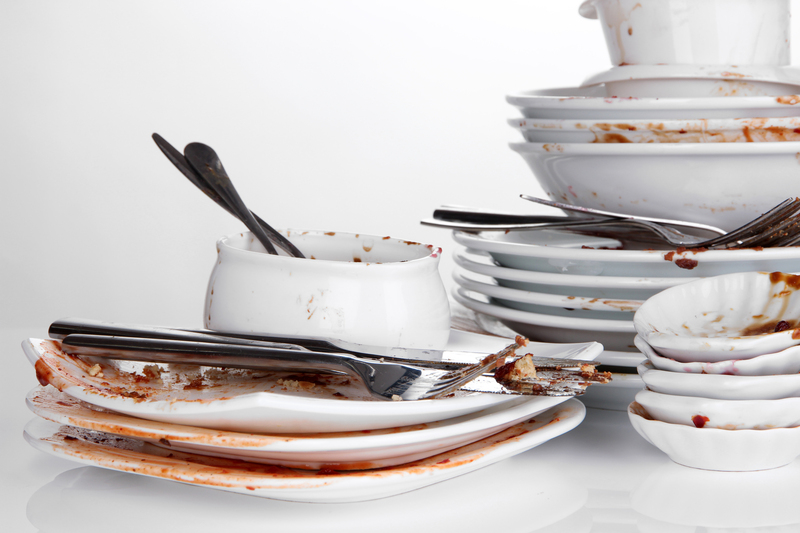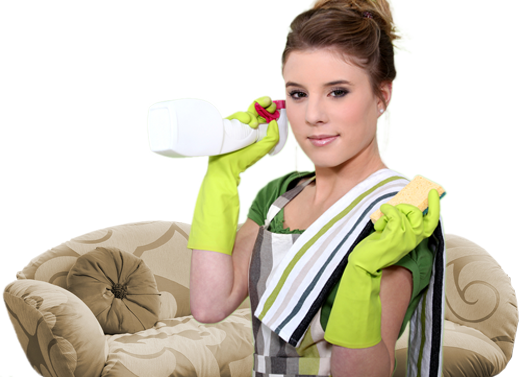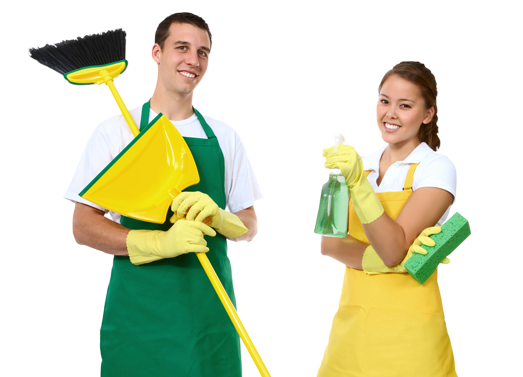Shining Bright: Jewelry Cleaning Secrets
Posted on 25/08/2025
Shining Bright: Jewelry Cleaning Secrets
Jewelry is much more than an accessory; it's an expression of personal style, cherished for its beauty and sentimental value. Over time, however, even the most dazzling pieces can lose their luster due to daily wear, exposure to oils, lotions, perfumes, and the elements. The good news is that with proper jewelry cleaning techniques, you can restore your necklaces, rings, bracelets, and earrings to their original brilliance. In this comprehensive guide, we'll dive into jewelry cleaning secrets that ensure your treasured pieces shine bright for years to come.

Why Does Jewelry Lose Its Shine?
Jewelry, whether it's made of gold, silver, platinum, or adorned with precious stones, can accumulate grime, tarnish, and even microscopic scratches. These diminish the natural sparkle and can even contribute to long-term damage if not addressed. Let's explore the primary culprits behind the dulling of your prized adornments:
- Oils and Sweat: Skin oils and sweat create a film on metal and gemstones, dulling their appearance.
- Cosmetics and Lotions: Residue from makeup, lotions, and perfumes can build up, leading to cloudy stones and faded metal.
- Oxidation: Especially with silver jewelry, exposure to air can lead to oxidation, resulting in tarnish.
- Environmental Pollutants: Dust, household cleaners, and other chemicals can all contribute to a loss of shine.
The Basics of Safe Jewelry Cleaning
Jewelry care and cleaning are essential skills for every jewelry lover. Not all jewelry is created equal, so cleaning methods must be tailored to the type of metal and gemstones you're working with. Here are some general principles to ensure safety and maximum brilliance:
- Always identify the material: Before cleaning, know if your piece is solid gold, gold-plated, silver, platinum, or if it contains delicate gemstones.
- Use gentle cleaning solutions: Harsh chemicals and abrasives can damage finishes and gemstones.
- Test a small area first: Especially if using a new cleaning method, always test an inconspicuous spot first.
- Be cautious with ultrasonic cleaners: Not all jewelry is suitable for these devices, particularly pieces with glued stones or antique jewelry.
Secret #1: The Power of Soap and Water
Sometimes, the most effective jewelry cleaning tips are also the simplest. A mild soap and warm water solution can safely clean most solid metal jewelry and durable gemstones. Here's how:
- Fill a small bowl with lukewarm water (not hot) and add a drop of mild dish soap.
- Soak your jewelry for about 15-20 minutes to loosen grime.
- Use a soft-bristled toothbrush to gently scrub hard-to-reach places (such as behind stones).
- Rinse thoroughly under clean water and dry completely with a lint-free cloth.
Tip: Never soak pearls, opals, or turquoise, as water can weaken their settings or damage the stones.
Secret #2: Restoring Shine to Silver Jewelry
Silver jewelry easily tarnishes but is equally simple to brighten. One popular cleaning hack involves common household items:
- Line a bowl with aluminum foil, shiny side up.
- Add one tablespoon of baking soda and one tablespoon of salt.
- Pour in warm water and stir.
- Submerge your silver jewelry, making sure it touches the foil. This triggers a chemical reaction that removes tarnish.
- Rinse and buff with a soft cloth.
Warning: This method is not recommended for jewelry with fragile gemstones or oxidized finishes, as it may alter their appearance.
Secret #3: Homemade Jewelry Cleaning Solutions
For an eco-friendly and effective DIY jewelry cleaner, try the following recipe:
- Mix equal parts white vinegar and water.
- Soak your jewelry for 10-20 minutes.
- Brush gently, then rinse thoroughly.
This is a versatile solution, safe for gold, silver, and platinum, but always avoid using vinegar on pearls, opals, and other porous gemstones.
Secret #4: Ultrasonic Cleaners - When and How to Use Them
Ultrasonic jewelry cleaners use high-frequency sound waves to break apart dirt on jewelry. These devices are great for solid gold, platinum, diamonds, and rubies but not for softer or porous stones. Here's how to make the most out of them:
- Read the manufacturer's instructions carefully.
- Do not use ultrasonic cleaners for emeralds, opals, pearls, or any jewelry with glued-in stones.
- Keep cleaning time short to avoid damaging delicate pieces.
Secret #5: Professional Jewelry Cleaning Advice
While at-home jewelry cleaning works for most pieces, certain situations call for expert care:
- Delicate antique jewelry: Professional jewelers have tools and solutions suited for fragile heirlooms.
- Heavily tarnished or dirty pieces: If home methods aren't effective, visit a professional for a deep cleaning and inspection.
- Routine maintenance: Annual professional cleaning and inspection help ensure settings are secure and stones aren't loose.
Specialized Jewelry Cleaning Tips by Material
Gold Jewelry
- Use warm, soapy water and a soft brush.
- Rinse thoroughly to remove all soap residue.
- Polish with a jewelry-specific polishing cloth for an added shine.
- Avoid using abrasive pads or chemicals that can scratch or discolor gold.
Silver Jewelry
- Silver-specific polishing cloths are the best way to maintain daily shine.
- For deep cleaning, use baking soda paste (1 part water, 3 parts baking soda).
- Rub gently and rinse well.
Pearls and Porous Gemstones
- Never soak pearls. Instead, wipe them with a damp, soft cloth after every wear.
- Avoid ultrasonic cleaners, steamers, or any harsh chemicals.
- Pearls should be the last thing you wear and the first thing you take off.
Diamonds and Hard Gemstones
- Diamonds can handle mild soap and water cleaning, and benefit from gentle brushing around prongs and underneath the setting.
- For extra sparkle, soak in a solution of water and a few drops of ammonia for about 10 minutes, then rinse well.
Costume Jewelry
- Most costume jewelry uses glue to set stones, so avoid soaking.
- Wipe gently with a damp cloth and dry immediately.
- If extra cleaning is needed, use a cotton swab dipped in diluted rubbing alcohol to reach intricate areas.
Advanced Jewelry Cleaning Secrets
How to Remove Tarnish without Harsh Chemicals
- For silver, create a paste with baking soda and water. Gently rub onto the surface, rinse, and buff with a clean cloth.
- For stubborn gold tarnish, use a mixture of salt, baking soda, and warm water, and let the piece sit in the solution for 5 minutes before rinsing.
Pro tip: Don't use toothpaste on jewelry! It contains abrasives that can scratch metals and gemstones.
Reviving Gemstone Brilliance
- Mix a few drops of dish soap with club soda--its bubbles can help lift dirt from behind gemstones.
- Soak for 10-15 minutes and use a soft brush to clean settings.
- Rinse thoroughly and pat dry.
Drying and Storing Jewelry Correctly
A crucial part of keeping jewelry clean and shiny is proper drying and storage:
- Always dry jewelry thoroughly after cleaning to prevent water spots and tarnish.
- Store silver in anti-tarnish pouches or cloths.
- Keep different metals and gemstones separated to avoid scratches.
- Consider silica gel packets in your jewelry box to keep excess moisture at bay.
Jewelry Cleaning Mistakes to Avoid
- Soaking delicate stones: Fragile gems like pearls, turquoise, and opals should never be soaked.
- Using harsh chemicals: Bleach and chlorine can permanently damage most jewelry metals and stones.
- Forgetting to check for loose stones: Inspect your pieces regularly to ensure settings are secure before cleaning.
- Ignoring the manufacturer's care advice: Always check for specific cleaning tips for branded or designer jewelry.
Extra Tips: Prolonging the Shine of Your Jewelry
- Remove rings when washing hands, cleaning, or working with chemicals.
- Put on jewelry after applying perfume or lotion to minimize residue buildup.
- Wipe down frequently worn pieces with a soft cloth nightly.
- Get jewelry professionally cleaned and inspected once a year.
Eco-Friendly Jewelry Cleaning Hacks
- Use cornstarch to absorb oils--dust your jewelry, let it sit, then wipe clean.
- Lemon juice and baking soda can help remove tarnish from silver, but only use this for pure silver without delicate stones.
- A mixture of water and a few drops of essential oil makes a pleasant, gentle cleaning solution for regular maintenance.

FAQs: Jewelry Cleaning & Care
- How often should I clean my jewelry?
Ideally, clean pieces you wear regularly once every 1-2 weeks. More delicate or rarely worn items can be cleaned as needed. - Can I use vinegar on all types of jewelry?
No, avoid vinegar for soft or porous gemstones like pearls and opals, as it can damage them. - What's the safest daily cleaning method?
Wiping with a soft, lint-free cloth is safe for nearly all types. - Can toothpaste clean jewelry?
It's best avoided. Toothpaste is abrasive and can scratch metals and gems.
Conclusion: Let Your Jewelry Shine Bright!
A sparkling, well-maintained piece of jewelry can be the centerpiece of an outfit or a cherished heirloom that stands the test of time. By following these jewelry cleaning secrets and expert tips, you're investing in the long-lasting beauty and value of your treasures. Whether you opt for gentle at-home solutions or occasional professional cleaning, the right care routines will keep your necklaces, rings, bracelets, and earrings shimmering for years to come.
Embrace these jewelry cleaning secrets and let every gemstone and metal in your collection shine bright--because well-cared-for jewelry is always in style!




